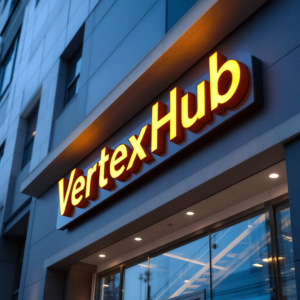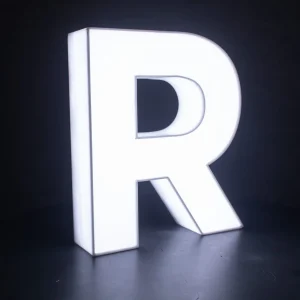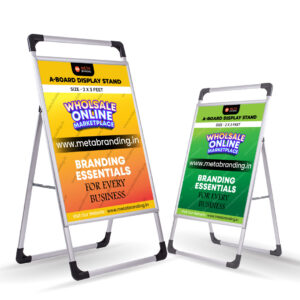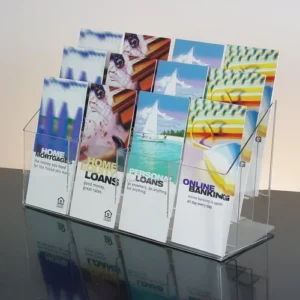Signboards play a pivotal role in conveying messages, enhancing brand identity, and guiding customers. The design of a signboard is a blend of creativity, functionality, and understanding the context in which it will be used. This article explores the different types of signages and the principles of effective signboard design, offering insights into creating impactful and memorable signs.
1. Types of Signages
Signages come in various forms, each serving a distinct purpose. Here are some of the most common types:
A. Outdoor Signages
Outdoor signages are designed to attract attention and provide information to passersby. They are usually large, durable, and weather-resistant.
- Billboards: Large-scale signs placed in high-traffic areas for maximum visibility.
- Pylon Signs: Tall, freestanding signs often used by businesses to display their name and logo.
- Monument Signs: Low-profile signs typically placed at entrances, offering a prestigious and welcoming look.
Image: Various outdoor signages including billboards, pylon signs, and monument signs.
B. Indoor Signages
Indoor signages are used within buildings to guide, inform, or enhance the interior aesthetics.
- Lobby Signs: Installed in reception areas to create a strong first impression.
- Wayfinding Signs: Help visitors navigate through a space, including directories and directional signs.
- Menu Boards: Commonly used in restaurants to display menu items and prices.
Image: Examples of indoor signages such as lobby signs, wayfinding signs, and menu boards.
C. Illuminated Signages
Illuminated signages are designed to be visible at night or in low-light conditions, often using LED lights for energy efficiency.
- Channel Letters: Individual letters with internal lighting, used for branding and storefronts.
- Backlit Signs: Signs with lighting behind the surface, creating a halo effect.
- Neon Signs: Classic signs using neon gas to produce vibrant, glowing colors.
Image: Illuminated signages including channel letters, backlit signs, and neon signs.
D. Digital Signages
Digital signages use screens to display dynamic content, which can be easily updated.
- LED Displays: Large, bright displays used for advertising and public information.
- LCD Screens: Used for smaller, indoor applications like menus or information kiosks.
- Interactive Touchscreens: Allow users to interact directly with the display for a more engaging experience.
Image: Various digital signages like LED displays, LCD screens, and interactive touchscreens.
2. Principles of Effective Signboard Design
Creating an effective signboard involves several key principles:
A. Clarity and Readability
The primary goal of a signboard is to convey a message quickly and clearly. Use simple, legible fonts and high-contrast colors to ensure readability from a distance.
- Font Selection: Choose sans-serif fonts for better readability.
- Color Contrast: Ensure the text stands out against the background.
- Simplicity: Avoid clutter and focus on the core message.
Image: Examples showing the difference between clear and cluttered signboard designs.
B. Brand Consistency
Your signboard should reflect your brand’s identity through colors, fonts, and logos. Consistency helps in building brand recognition and trust.
- Logo Placement: Ensure your logo is prominent and properly positioned.
- Brand Colors: Use your brand’s color palette consistently.
- Typography: Use fonts that align with your brand’s style.
Image: Signboards reflecting consistent brand identity.
C. Visibility and Placement
The effectiveness of a signboard also depends on its visibility and placement. Consider the viewing distance, angle, and lighting conditions.
- Height and Angle: Place signs at eye level or higher for maximum visibility.
- Lighting: Ensure the sign is well-lit, especially if it’s meant to be seen at night.
- Obstructions: Avoid placing signs where they might be obscured by trees, buildings, or other objects.
Image: Correct and incorrect examples of signboard placement.
D. Durability and Maintenance
Signboards, especially outdoor ones, need to withstand weather conditions and wear over time. Use durable materials and plan for regular maintenance.
- Material Choice: Use materials like acrylic, aluminum, or treated wood for longevity.
- Protective Coatings: Apply UV-resistant coatings to prevent fading.
- Maintenance Schedule: Regularly check and clean the sign to maintain its appearance.
Image: Durable signboards made from various materials.
-
2D Acrylic Letter
₹30.00 -
3D Acrylic Letter (Non-lit)
₹50.00 -
3D Building Signs
Original price was: ₹12,000.00.₹11,499.00Current price is: ₹11,499.00. -
3D LED Acrylic Letter
₹190.00 -
3D LED Acrylic Letter with ACP
₹200.00 -
A-Board Display Stand
Original price was: ₹3,200.00.₹2,999.00Current price is: ₹2,999.00. -
A4 Acrylic Brochure Stand
Original price was: ₹1,500.00.₹1,299.00Current price is: ₹1,299.00. -
ACP Sign Board (All Side Glow)
₹200.00 -
ACP Sign Board (Front Glow)
₹190.00
Conclusion
Designing effective signboards requires a balance of aesthetics, functionality, and brand alignment. By understanding the different types of signages and applying key design principles, businesses can create signboards that not only attract attention but also enhance their brand identity. Whether it’s an illuminated channel letter sign for a storefront or a digital LED display for dynamic advertising, the right design can make a significant impact.
For custom signboard design and manufacturing solutions, visit Signage Mumbai.









